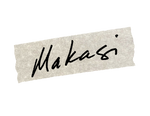Orders shipped in quantities of 3, 6, or 12 Bottles
- Home
-
Wine
- All Wines
- M-19CH-BZV-RRV (Bazzano)
- M-19PN-SVR-SCM (Saveria)
- M-19PN-SVR-SCM-U (Saveria)
- M-19CH-SLV-CNV (Siletto)
- M-19CH-SLV-CNV-U (Siletto)
- M-20PN-HRV-RRV (Hogan's Run)
- M-21PN-HRV-RRV-R (Hogan's Run)
- M-21PN-HRV-RRV (Hogan's Run)
- M-21PN-SVR-SCM (Savaria)
- M-20CH-FDV-RRV (Fidelis)
- M-20CH-FDV-RRV-U (Fidelis)
- M-21CH-PTG-SNC (Petaluma)
- M-21CH-PTG-SNC-R (Petaluma)
- About Us
- About the Wine
- Contact Us












